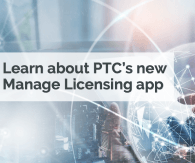Meet Neal. When Neal joined PTC five years ago, he immediately hit the ground running on IoT initiatives, working in multiple areas ranging from pre-sales to partner relations. Today, he is a Worldwide ThingWorx Center of Excellence Principal Lead at PTC, and his biggest focus is supporting the go-to-market for the Microsoft partnership.
I sat down with Neal recently to hear the details on exactly how Azure and ThingWorx can be used to develop world-class IIoT applications.
Kaya: Can you explain how Azure and ThingWorx work together?
Neal: Yes, so Azure provides the cloud infrastructure that our customers need in order to deploy ThingWorx.
By having Azure as our preferred cloud platform, we’re able to specialize our R&D efforts into utilizing functionality that is available in Azure, rather than having to reinvent the wheel ourselves for each cloud platform in the attempt to remain cloud-agnostic. By leveraging a single, already quite powerful, cloud platform through Azure, we’re able to maximize our development efforts.
Kaya: What was the major problem that led to us investigating cloud options?
Neal: There were two issues that our users had. The first was we often had complicated installs and setup procedures because we were genericizing the whole process, so the initial setup and run was complicated and expensive. For example, we were requiring them to setup additional VMs and components, and we were giving them generic instructions because we were being very agnostic, when they had already chosen outside of us to use one of the cloud platforms. We knew our customers wanted to move fast, so we had to make it easier and faster for them to see results.
The other issue we ran into with customers was the confusion in the offerings. For ThingWorx, ingest is just one aspect of IoT. ThingWorx is particularly strong in areas like enabling mixed reality and augmented reality as well as application enablement. And, while we also have the ability to perform ingest capabilities, Microsoft is especially powerful when it comes to ingest capabilities and security. We decided that the smartest solution was to leverage Microsoft’s expertise in data ingestion to make ThingWorx even more powerful; so, we made the Azure IoT Hub Connector. By partnering with Microsoft, we have joint architecture where you can see how Microsoft provides key features and ThingWorx will run on top of those features and get you faster to the market to develop the application.
Below is an example of a high-availability deployment of ThingWorx on Azure that utilizes ThingWorx Azure IoT Connectors to access an Azure IoT Hub. High-Availability Deployment of ThingWorx on Azure
Kaya: Why did we partner with Azure? What specific benefits does Azure offer over other cloud services providers?
Neal: When we started to look at what our customers were using for cloud services, we noticed that a lot were using Microsoft. When we join forces with Microsoft, we have a much more wholistic offering around digital transformation. With the partnership, PTC and Microsoft are able to leverage each partner’s respective strengths to provide even more powerful IIoT solutions. You have Windchill and Microsoft’s business application strategies; you have Vuforia and Microsoft’s mixed reality and augmented reality strategies; and, you have ThingWorx on the Microsoft Azure cloud. Overall, you have a much more complete and powerful offering together.
Kaya: What is your favorite aspect about working at PTC?
Neal: The growth. There’s been a lot of changes over the last five years that I’ve been here. PTC has been able to leverage its strengths and long-time experience in the CAD and PLM markets to enter and ultimately become a leader in the IIoT market, according to reports by research firms like Gartner and Forrester. In short, the growing IIoT market and PTC’s leadership in the industry.
Note to Readers: You’ve likely heard about our major strategic partnership with Microsoft to leverage our respective IIoT and cloud technologies to optimize the creation, deployment, management and overall use of your IIoT applications. If you haven’t heard about the partnership, check out the press release here. If you’re curious about more aspects of PTC’s partnership with Microsoft, check out this site devoted to sharing how ThingWorx and Azure are better together.
View full tip


